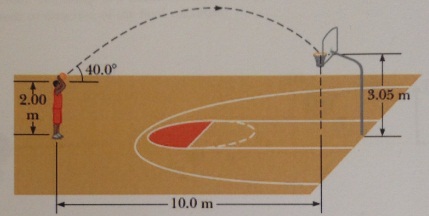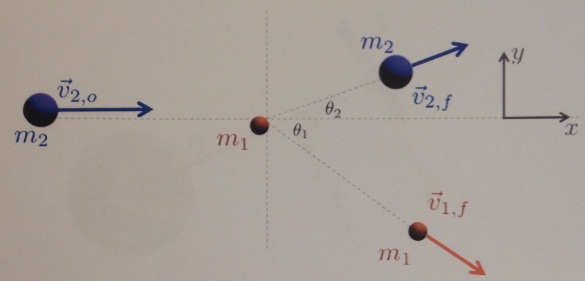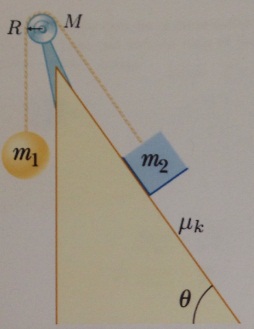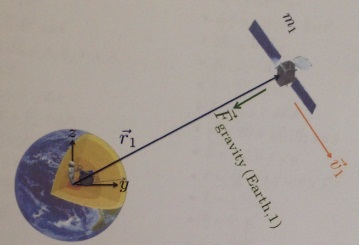Assignment:
1. A basketball is successfully shot from an initial height of 2.0 in at an angle of 40°. The basketball passes through the hoop 10.0 m away at a height of 3.05 m.

(a) Find the magnitude of the initial velocity
A. 10.67m/s
B. 10.45 m/s
C. 12.71 m/s
D. 9.66 m/s
(b) How long is the basketball in flight
A. 1.35s
B. 1.49s
C. 1.22s
D. 1.04s
(c) Find the angle with respect to the horizontal that the basketball makes when it passes through the net
A. 32.2°
B. 12.9°
C. 44.5°
D. 21.4°
2. Two masses m2 = 6 kg and m1 = 1 kg undergo a collision. Initially m2 is incident with a speed v2,0 = 5 m/s while m1 is at rest. After the collision m1 has a final speed v1,f = 7.423 m/s and departs at an angle θ1 = 30° with respect to the x axis, while m2 has a final speed of v2,f and departs at an angle of θ2 with respect to the x axis. (Note: the image is a schematic and not supposed to represent the magnitude of the speeds or direction of the final velocities)

(a) Find the final speed of m2
A. V2, f = 3.977 m/s
B. v2,f = 4.511 m/s
C. V2,f = 42.26 m/s
D. v2,f = 4.425 m/s
(b) Find the final angle of mo
A. θ2 = 8.95°
B. θ2 = 13.74°
C. θ2 = 8.04°
D. θ2 = 65.88°
(c) Find the final Kinetic Energy of the two masses combined
A. 88.6J
B. 61.6J
C. 75.0J
D. 86.3J
3. Two masses m1 = 7kg and m2 = 4 kg are connected via a string that runs over a massive pulley of mass M = 20 kg and radius R = 0.1 m (treat the pulley as a filled cylinder). The mass m2 is on an incline with a coefficient of friction μk = 0.3. that is inclined at an angle of θ= 49° as shown in the diagram

(a) What is the moment of inertia of the pulley?
A. 0.08 kg m2
B. 0.1 kg m2
C. 0.2 kg m2
D. 1 kg m2
(b) Solve the equations of motion for all three object to find the acceleration of m1
A. -1.2 m/s2
B. 1.49 m/s2
C. 2.8 m/s2
D. 9.8 m/s2
(c) After t = 2 s what is the angular speed of the pulley assuming it starts from rest?
A. 56.4 rad/s
B. 29.8 rad/s
C. 100.8 rad/s
D. 626.0 rad/s
4. It is possible to put a satellite in a circular orbit about the Earth at a speed such that it will rotate at exactly the same rate that the earth rotates and thus stay overhead at all times. Such an orbit is called Geostationary.

(a) Find an equation for the angular speed of a circular orbit of radius r about the earth
A. w = √GN MEarth/ r3
B. w = √GN MEarth/ r2
C. w = √GN MEarth/ r
D. w = √2GN MEarth/ r
(b) Given the Earth completes one revolution in 24 hours, what is the an- gular speed of the earth
A. 3.64 x 10-5 rad/s
B. 7.27 x 10-5 rad/s
C. 4.36 x 10-3 rad/s
D. 463.2 m/s
(c) Using the result from (a) and (b) find the radius of required for a Geo¬stationary orbit. (GN = 6.67 x 10-11 N m2 /kg2 and MEarth = 5.97 x 1024 kg).
A. r = 9.34 x 109 m
B. r = 2.74 x 1011m
C. r = 4.22 x 107 m
D. r = 8.44 x 107 m